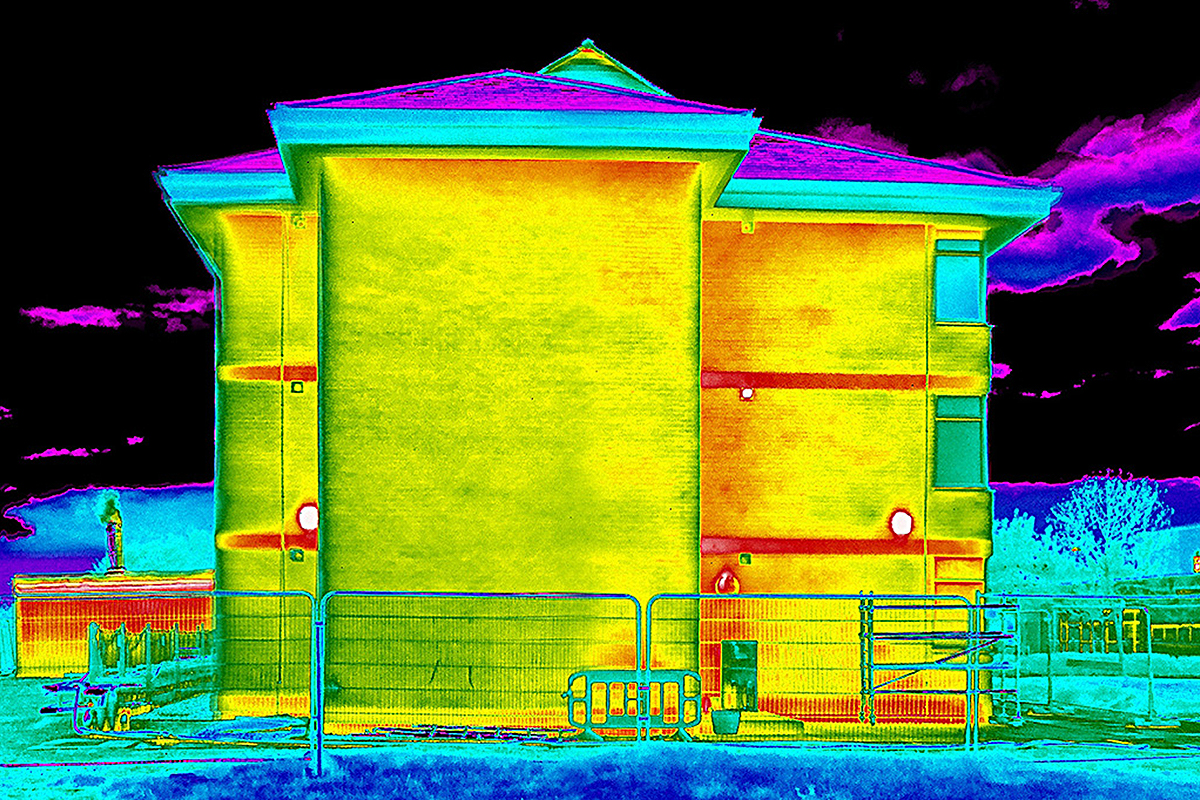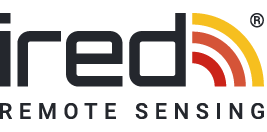iRed offers thermal imaging surveys specifically tailored to meet the requirements of BREEAM. These surveys can contribute credits towards overall BREEAM certification, and provides visual evidence to the energy performance of a building.
BREEAM (Building Research Establishment Environmental Assessment Methodology) is a structured methodology to analyse, rate and certify a building’s environmental and sustainability characteristics.
The scheme that outlines the requirements for a BREEAM thermal imaging survey, the SD5078 BREEAM UK New Construction standard, was launched in 2014 and details the assessment of thermal comfort for health and wellbeing. The aim of the scheme is to mitigate the life cycle impacts of new buildings on the environment in a robust and cost effective manner.

Thermal bridging detected during a building survey.
The BRE SD5076 Scheme
The following is the necessary criteria set out within the BRE SD5076 scheme:
One Credit – Testing And Inspecting Building Fabric
- The commissioning and testing schedule and responsibilities credit is achieved.
- The integrity of the building fabric, including continuity of insulation, avoidance of thermal bridging and air leakage paths is quality assured through completion of post construction testing and inspection. Dependent on building type or construction, this can be demonstrated through the completion of a thermographic survey as well as an airtightness test and inspection (see compliance notes 3 and CN3.4. The survey and testing is undertaken by a Suitably Qualified Professional (see Relevant definitions) in accordance with the appropriate standard.
- Any defects identified in the thermographic survey or the airtightness testing reports are rectified prior to building handover and close out. Any remedial work must meet the required performance characteristics for the building/element.
From: Technical Manual: Version: SD5076 – Issue: 4.1 – Issue Date: 09/03/2016. Other issues may differ in detail.
So why undertake a BREEAM thermal imaging survey?
Besides being awarded a BREEAM credit for overall certification, thermal surveys are an effective way to monitor environmental performance and energy efficiencies in buildings. Within the construction and management industry, thermal imaging surveys are also a good way to communicate the overall quality of your new build, along with demonstrating best practice within industry.

Reflection on a thermal image.
BREEAM Survey Requirements
iRed building thermal imaging surveys are in accordance with the requirements set out in BS EN 13187. These requirements satisfy the BRE SD5076 standard for BREEAM credit, and are as follows:
Temperature Difference
To effectively ‘see’ heat loss (or gain) using a thermal imaging camera, a 10ºC temperature difference between the inside and outside of a building must be achieved. If a building has no operational heating system, temporary heaters – such as space heaters – may be required.
Dry Building Surfaces
Before the start of a survey, building surfaces should be dry to ensure that moisture evaporation does not skew the results. For building materials such as brick, its recommended that surfaces have been dry for at least 24 hours.
Full Access
In order to effectively measure surface temperatures within a building, full access must be given to thermographers in order to inspect outside walls and surfaces from the inside. In addition to this, obstructions such as furniture should be removed at least an hour before the start of a survey. This is to allow local temperature conditions to stabilise.
No Solar Radiation
To avoid the effects of solar radiation, thermal imaging building surveys should be conducted at least 2 hours after sunset or 2 hours before sunrise. This is important, as it means that thermal imaging surveys can be expected to start at 00:00 during summer and 20:00 during winter.
Low Wind Speed
The wind speed during a thermal imaging survey should not exceed 5 metres a second (18kph). This is to stop the cooling effect from wind to affect infrared camera readings.
How does the BREEAM process work?
After the successful completion of a BREEAM building thermal imaging survey, clients will receive a thermal report consisting of multiple infrared images and expert analysis. This report, including advice and recommendations to the buildings overall thermal performance, will then be passed onto your BREEAM assessor, who will decide if your building performs sufficiently to be awarded a BREEAM credit.
The amount of credits available within the BREEAM rating varies depending on the building. Depending on how many credits your building receives in total from other BREEAM assessments, your building can be broadly classified under the following categories:
- Unclassified
- Pass
- Good
- Very Good
- Excellent
- Outstanding
Other typical BREEAM assessments include air pressure testing, acoustic testing and lighting assessment. In contrast to these assessments, thermal imaging surveys are a straightforward and simple assessment to achieve an extra credit.
What can thermal imaging detect?
Thermal imaging cameras are highly specialist pieces of equipment. When used properly, they can discover a multitude of issues including:
- Missing or damaged insulation
- Areas and pathways of heat loss
- Areas of damp and mould growth
- Areas of Thermal bridging
- Thermal comfort levels
Using thermal cameras on buildings is one of the most effective ways to monitor sustainability performance. By assessing new builds, clients can be assured that their buildings are efficient with resources, ensuring effective performance from every angle.
Thermal Imaging Surveys from iRed
As the UK’s leading experts in infrared thermography, we’re experienced with conducting specialist thermal imaging surveys for a wide range of commercial applications.
Our engineers are all qualified and approved Category 2 and Category 3 thermographers who have carried out hundreds of thermal imaging surveys across the UK – all of which have contributed towards achieving a BREEAM credit.
Results from our surveys are delivered in a clear and comprehensive report, featuring multiple thermal images that provides context for the entire building fabric.
Through the iRed Academy, we can also provide ISO 18436 BINDT accredited thermal imaging training for those wishing to meet the required criteria themselves.

